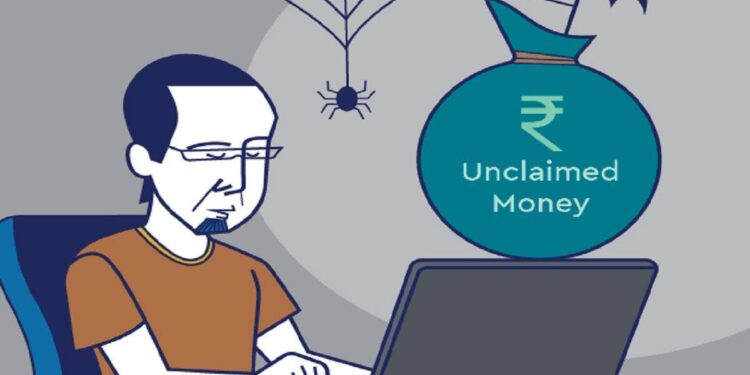 Unclaimed amounts arise because of death claims, health benefit claims, maturity claims, survival benefit, surrenders or foreclosures.
Unclaimed amounts arise because of death claims, health benefit claims, maturity claims, survival benefit, surrenders or foreclosures.As unclaimed amounts lying with insurers have risen substantially, the regulator has updated the norms on monitoring, reporting and certification of such amounts. All insurance companies will transfer the unclaimed money of policyholders for over 10 years to the Senior Citizens’ Welfare Fund (SCWF). Insurers will transfer the money to SCWF on or before March 1 every year.
The policyholders or their beneficiaries will be eligible to claim the dues under their policies up to 25 years from the date of transfer of the money to SCWF. If no claim is made up to a period of 25 years after the transfer to SCWF, the amounts will escheat, ie, revert to the central government.
Unclaimed amounts arise because of death claims, health benefit claims, maturity claims, survival benefit, surrenders or foreclosures. Often claims settled by insurers may not have been paid because of litigation from policyholders. There could be excess premium collected by the insurer and not refunded to the policyholder at the time of claim settlement or maturity payments.
The Insurance Regulatory and Development Authority of India (Irdai) has underlined that the Policyholder Protection Committee of the board of the insurance company will oversee the timely payout of the dues of the policyholders. Every insurer will furnish the details of the action taken and status of the unclaimed amounts to the regulator every six months.
Display on website
Any unclaimed money of policyholders over Rs 1,000 will have to be displayed on the insurance company’s website. Insurers will have to facilitate processes which can enable policyholders or their beneficiaries to find out about the unclaimed amount due to them. The website should have an interface where policyholders or their beneficiaries can feed the policy number, PAN of the policyholder, name and date of birth of the policyholder to know the unclaimed amounts with the company.
To recover the unclaimed money, policyholders or their beneficiaries will have to enter these details on the insurer’s website. If the information entered matches the insurer’s database, then the name and address of the policyholder against whom any unclaimed amount is lying with the insurer will be displayed. Once the unclaimed amount is located, they can approach the insurer to get the money.
Insurers will remit the proceeds of all claims, maturity payments or any amount due to policyholders or their beneficiaries through electronic mode such as National Electronic Funds Transfer, Electronic Clearing System, Real Time Gross Settlement or Interbank Mobile Payment System. For all life insurance policies, a standard clause will have to be included as a footnote in all future communications with the policyholders. In case of general insurers including standalone health insurers, bank account details will be taken if a claim or refund arises or at the time of renewal of the policy.
For all new policies at the proposal stage, the insurance company will take the details of the bank account of the proposer. Insurers will have to collect necessary documents such as a cancelled cheque as a proof of the bank account to ensure authenticity. Insurers will provide an option to the policyholders to change or modify the bank account if the policyholder desires. In order to minimise the occurrence of unclaimed amounts, insurers will keep the policyholders informed about any updates, changes and maturity details by SMS or email.
Accounting of unclaimed amounts
Irdai has notified that insurers will maintain a single segregated fund to manage all unclaimed amounts and the sum of each fund will be invested in money market instruments, liquid mutual funds and fixed deposits of scheduled banks. Insurers will disclose the unclaimed amount as a separate line item in the specified Notes or Schedules to the balance sheet. Cheques issued by the insurers against the unclaimed amount but not encashed by the policyholders will be credited back to unclaimed amount after expiry of the validity period of the cheques.
Insurers will credit the investment income accruing on the unclaimed amounts to the respective identified unclaimed amount. The income from the unclaimed fund will be shown as a separate line item in the schedule of Current Assets as well as
Current Liabilities, net of fund management charges. Insurers will pay the identified unclaimed amount and the investment income to the policyholders or beneficiaries whenever a claim is made as per the procedure.
Do you know What is ? FE Knowledge Desk explains each of these and more in detail at Financial Express Explained. Also get Live BSE/NSE Stock Prices, latest NAV of Mutual Funds, Best equity funds, Top Gainers, Top Losers on Financial Express. Dont forget to try our free Income Tax Calculator tool.
![]() Financial Express is now on Telegram. Click here to join our channel and stay updated with the latest Biz news and updates.
Financial Express is now on Telegram. Click here to join our channel and stay updated with the latest Biz news and updates.













